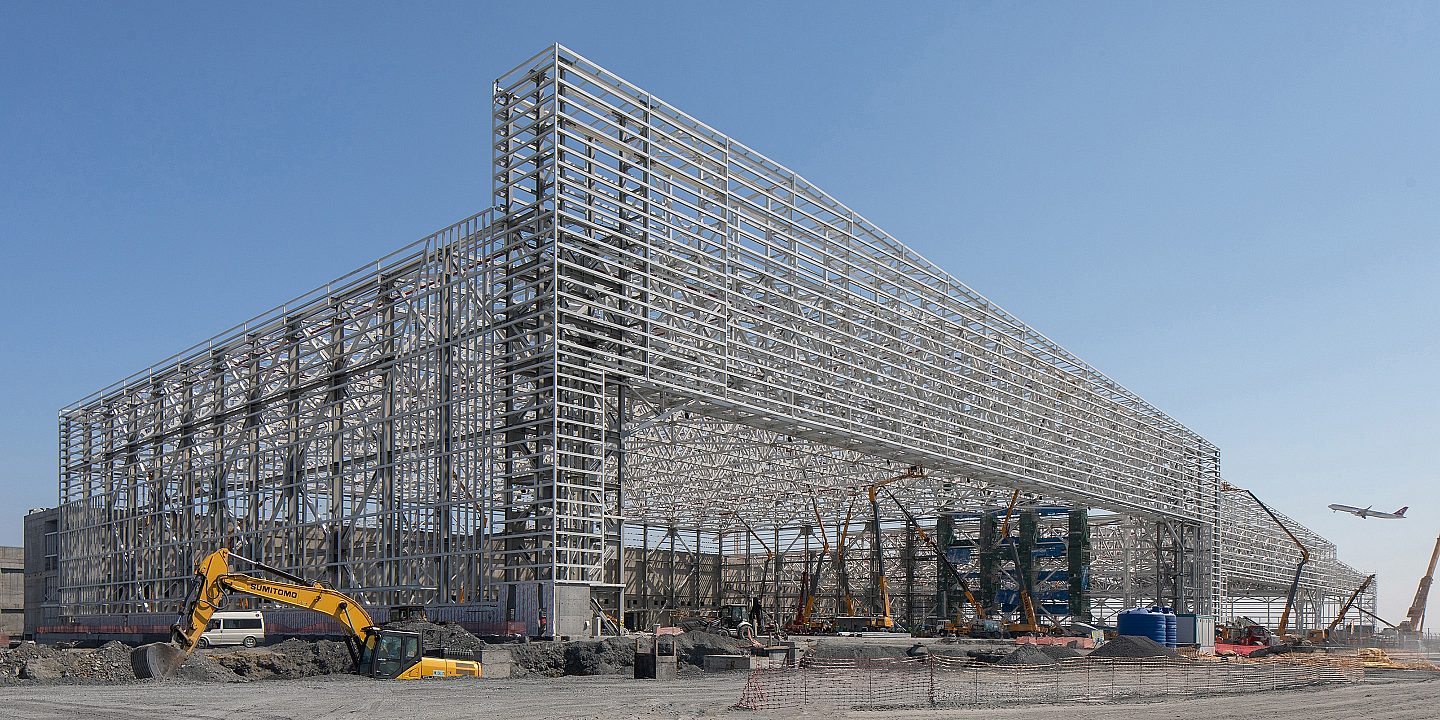When one begins to think about building a house, bridge, or even a smaller addition on a home, one of the first things that may come to mind is: What does a structural engineer do? A structural engineer is essential in the safety, durability, and survivability of any building that we live, work in, or travel to, whether subjected to ordinary or extreme forces. They integrate both the science of engineering and the knowledge to come up with buildings that are not merely functional but also safe to use in the long run. They make our cities and tall buildings, bridges, and houses stand confidently and with the strength that we are not always grateful for.
Who Is a Structural Engineer?
Structural engineering examines how structures work, how to design them, and how to evaluate or repair an existing structure. This involves making sure that buildings, bridges, towers, and other structures will not fall down under various conditions, i.e., under weather conditions, earthquakes, and on the basis of daily loads.
The structural engineer does not perform the same job as an architect or general civil engineer. Unlike architects who focus on the aesthetics of a building, civil engineers, who take into account other infrastructures, and structural engineers happen to give some attention to ensuring that the scaffolds of a building sufficiently withstand the effects of time. They are also trouble-shooters, they are creative and technical and they provide safety and freedom of innovative designs.
Core Responsibilities of a Structural Engineer
So, what does a structural engineer do daily? Their responsibilities are vast and central to every construction project. Some of the core tasks include:
- Designing Safe and Efficient Structures: A structural designer or structural engineer designs plans that ensure a construction, or infrastructure development can support weight and withstand forces such as wind, earthquakes and traffic.
- Analyzing Loads and Stresses: They figure out the amount of pressure and weight that a structure will bear and make sure that it is safe no matter the circumstances.
- Material Selection: They know the strength of steel, concrete and timber among other materials and thus choose the most cost effective yet durable materials.
- Collaboration with Other Professionals: They cooperate with architects, contractors and civil engineers to convert design concepts into safe and constructible designs.
- Site Inspections and Assessments: In addition to the work being as it was designed, they also pay a visit to the construction site and make sure that what they see there looks good and is structurally sound.
In short, a structural engineer is the guardian of safety and strength in construction, ensuring that every building or infrastructure project stands firm and serves its purpose reliably.
Areas of Work for Structural Engineers
Structural engineers work on a vast range of projects, from small residential building projects to huge infrastructure projects. To get a fair sense of what a structural engineer does, it is best to discuss the key spheres where their skills can come in most handy.
1. Residential Projects
Structural engineer or structural engineer is the key player in residential construction. They also design the basis of a single-family home and make sure that building multi-story apartment blocks is safe to occupy. They conceptualize structural stability in aspects such as beams, columns, and roof systems, and such a foundation will enable a house to be stable enough to be used and also to resist forces associated with the environment.
2. Commercial Buildings
Structural engineers are relied upon by offices, shopping malls, hospitals, and hotels. These are large spans, high loads, and often complex design projects. A structural engineer or structural engineer, examines materials, designs effective support systems, and avoids any structural failure. They achieve this with cost-effectiveness and safety measures without denying a designer the opportunity to design modern and functional living spaces.
3. Infrastructure Projects
Infrastructure is society supporting itself, and this is one of the sources of the greatest visible influence by engineers. Bridges, tunnels, railways, and highways are the types of structures that need proper planning and implementation. Structural performance is characterized by analyzing traffic loads and soil conditions, and reductions in risk exposure to the environment. Their efforts contribute to the healthy functioning of these gigantic projects to facilitate millions of people over the decades.
4. Industrial Facilities
Factories, power plants, and warehouses are concepts that are prepared to withstand heavy equipment, as well as heavy machinery and storage. A structural engineer/structural engineer designs the structures supporting loads of high stress, i.e., the foundations, floor systems, and support frames bear the loads. These also guarantee safety criteria and minimize the chances of collapse or any accidents in places where heavy-duty work continues regularly.
5. Renovation and Restoration
They do not only work on new building projects. Structural engineers also play a very critical role in the extension of the life of old buildings. Instead of just demolishing old buildings, they also study the situation and then advise on shelter, which can be put in place to make it earthquake-resistant. In such a way, they can assist communities in retaining their cultural heritage and at the same time modernize their structures up to safety requirements.
6. Specialized Projects
Besides conventional practice, structural engineers are also gaining prominence working on project-specific domains. These are the renewable energy facilities (such as wind turbine foundations and solar farms), stadiums, as well as offshore installations. Rather than narrowing down on the profession, the versatility of the profession can be illustrated by adapting to modern needs and opening up what a structural engineer does in the contemporary world.
Real-World Examples of Structural Engineering Impact
Structural engineers plan and measure meticulously each grand structure, and we tend to lose track of this fact, particularly when we gaze at a magnificent structure.
- Famous Landmarks: Consider the Golden Gate Bridge, the Burj Khalifa, or the Sydney Opera House; all of these leviathans are due to the behind-the-scenes efforts by structural engineers who ensured a balanced foundation, sturdiness, and durability.
- Everyday Structures: An everyday apartment or school building, your office is the result of the structural calculations that establish structural load-bearing capabilities and provide you with safety standards.
- Problem-Solving Case Studies: As an example, special damping systems and flexible materials were created by engineers of skyscrapers in earthquake-prone regions as they are built to withstand earthquakes..This answers, once again, what does a structural engineer do—they make the impossible possible through applied science.
Their influence extends beyond beauty and functionality; they make sure that structures remain safe under pressure, literally and figuratively.
Importance of Structural Engineers in Construction
Structural engineers render buildings and infrastructure with the safety and reliability that we have come to purport to rely upon in our day-to-day lives. What does a structural engineer do so that a building can be built?
- Ensure Safety and Stability: They determine the capacity of a structure and all its structural constraints so that the building can resist natural forces such as wind, earthquakes, and even floods, and on-roly lifts.
- Prevent Structural Failures: Making close estimations of loads and stresses, a structural engineer or structural engineer will avoid fatal collapses or expensive fixes and repairs.
- Balance Cost and Durability: They opt out the use of materials and designs that would not only overstretch the budget, but also ensure that their projects last long.
- Support Sustainable Construction: Structural engineers are important players of greening buildings. They come up with an energy-efficient and environmentally friendly construction, utilizing new materials and means.
- Boost Confidence in Design: Structural engineers instill confidence in the construction, be it a tall building, a bridge, or a residential project, that the structure will continue to behave as designed over many decades.
The Future of Structural Engineering
As technology and sustainability increasingly transform the construction industry, the question of what a structural engineer does is also going to change.
- Technology Integration: By using the likes of Building Information Modeling (BIM), artificial intelligence and 3D printing, a structural engineer or structural engineer can design more accurately and effectively.
- Sustainable Materials: There is a growing use of recycled materials such as steel and carbon fiber and self-healing concrete to define the future performance of structural solutions.
- Disaster-Resistant Design: Amidst the rising challenges in climate, there is a shift in the sense that engineers are putting emphasis on disaster-resistant buildings and infrastructures that can withstand earthquakes, hurricanes and floods.
- Smarter Cities: Structural designers will spearhead the smart infrastructure by designing energy efficient, resilient infrastructural systems in urban environments.
Conclusion
It is clear that what a structural engineer does with blueprints goes far beyond sketches—it’s about creating safe, reliable, and sustainable structures. Here in Hauppauge, the team at Strand Consulting Corporation has built a strong reputation for securing lives by ensuring every project, whether big or small, stands on a solid foundation. Structural engineering is both a science and an art, where physics, materials, and creativity come together in perfect balance.
That’s why having a trusted structural engineer in Hauppauge, NY is invaluable. Whether it’s designing a new home, restoring a historic property, or managing a large-scale infrastructure project, our engineers act as the invisible backbone of success. From our office at 490 Wheeler Rd, Suite 108, we’ve helped countless clients across Long Island turn their plans into reality while protecting both property and people.
If you’re ready to discuss your project, you can reach us at (631) 805-3179 or learn more about our work through Strand Consulting Corporation.
FAQs
Is a structural engineer the same as an architect?
No, a structural engineer does not associate himself with an architect. An architect will look at design, style, and space functionality, whereas the structural engineer will look at the loads, materials, and the integrity of the structure to ensure safety, stability, and strength of the structure.
What exactly does a structural engineer do?
A structural engineer plans and analyzes structures in such a way that they are safe, durable, and can withstand the loads imposed on them. They analyze materials, compute forces, and offer concrete options in foundations, beams, and columns, so that structures such as buildings, bridges, and others do not collapse.
Does a structural engineer provide drawings?
A structural engineer will issue plans that show how the structures, such as beams, foundations, and slabs, should be designed. These drawings inform builders and contractors of the specifications to be built to meet precision as well as specifications of safety, stability, and conformity to codes of construction.
Do structural engineers draw house plans?
Structural engineers do not normally draw up house plans as architects. They instead draw up structural drawings that concentrate on the structure, foundations, beams, and supports to make sure the structure is safe and functional. They collaborate with architectural plans and cover the load-bearing and structural parts of the work.
Can you define structural?
To define structural is to describe something that relates to the framework, stability, or essential support of a system, object, or building. In construction, it refers to elements such as beams, columns, and foundations that hold a structure together and ensure safety. More broadly, it can also mean anything fundamental to the makeup or organization of a system.





